Jazz alpine
SAALFELDEN Jazz Festival, August, 18-22, 2021
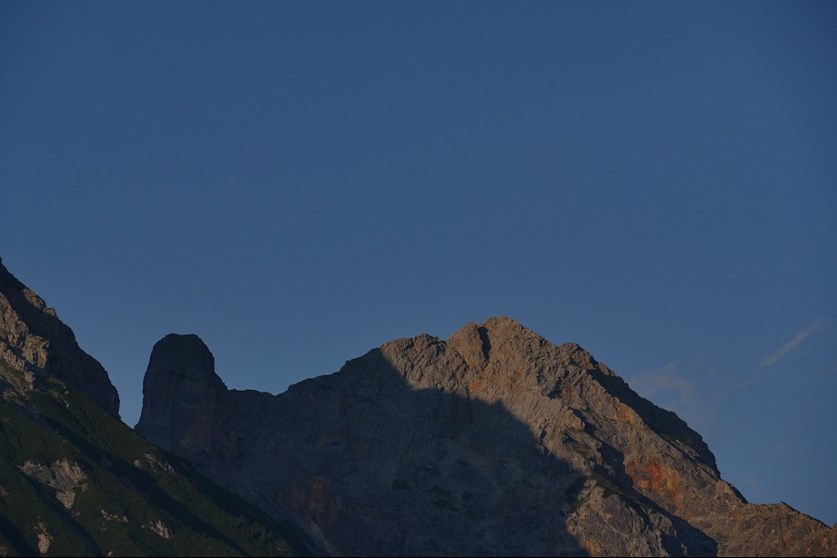
Saalfelden always is an event of summerly gathering in a magnificent alpine landscape, most clearly manifested by the sociable lingering on the huge roof terrace of the town's congress center. The plague was still on, but after the hiatus of a year without gathering internationally, being there felt as a beginning renaissance. And especially so, in those very August days, it felt like a vibrant green meadow near the abysses that had opened days and months before: the fiasco of the dramatic fall of Kabul, the flooding, the heat waves, the devastating wildfires, the pandemic.
Practicalities
No, we were not wearing carnival masks. More variation in design and color would have been needed. Everybody stuck to wearing practical (mouth-nose) masks as an extra necessity after having been registered and permitted to the VRT-territory (vaccinated, recovered or tested). Happily, masks were only obligatory in the concert hall, not in bars, restaurants, lounges or on the roof terrace. So, meeting, talking, drinking, eating together could happen unimpeded, and thus was a huge step away from the social restrictions of the past months. This needed extra organizational efforts under the circumstances of ever shifting Covid-regulations for events and traveling musicians. It seems for the time being we have to get used to it. It worked astonishingly smoothly there, and quite fast, everybody felt like a part of the remarkable Saalfelden hospitality that could thrive based on that effective and friendly executed measure. And, it has to be stated emphatically: with 10.000 visitors and lots of traveling musicians and many guests, no single Covid case occurred. September 19 the huge amount of gathered personal Covid-data could be deleted!
Saalfelden again manifested itself as this clearly experience-able miracle of organization and logistics, orientated on the smooth solving of all problems, the seemingly impossible ones included. The festival team and Helge Hinteregger of Music Austria (MICA) time after time fixed problems, removed obstacles, put things together quickly, flexible and effectively. All happened naturally, straightforward and person-oriented thereby making people trust and feel part of it all -a manifestation of a strong underlying alpine climbing spirit.
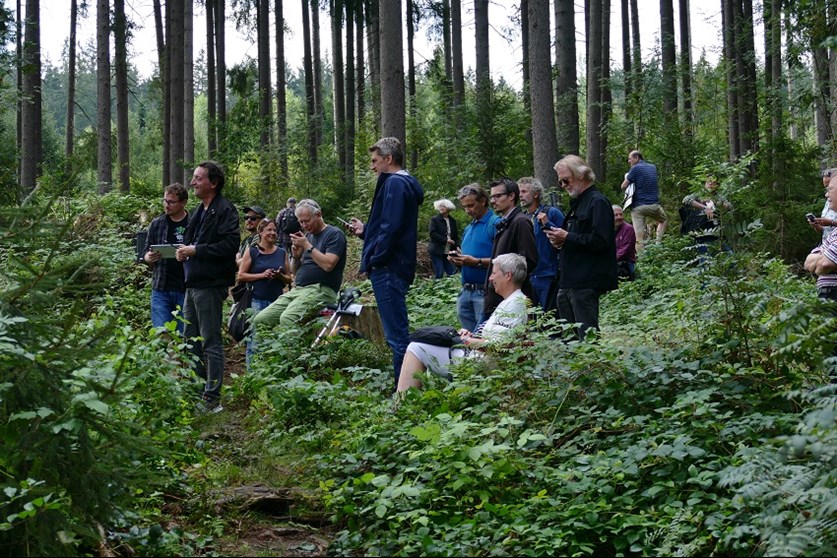
Locations
Located on a rather wide plateau at an altitude of 750 meters, Saalfelden (17.000 inhabitants) is surrounded by the so-called Stony Ocean formed by a mountain range with peaks between 2200-2650 meters. The festival location comprises five sites in town (Stadtpark, Kongresshalle, Nexus, Buchbinderei Fuchs, Otto-Gruber-Halle) and sites ranging from 780 to 1900 meters altitude high up in the mountains. These were the six Mountain Tracks: Kollingwald, Holzhotel Forsthofalm Leogang, Berggasthof Huggenberg, Stöcklalm Leogang, Peter-Wiechenthaler-Hütte, Tonspurenbühne Asitz. A special element is the extended "We hike/bike jazz" tours: one leading to Lettlkaser Hütte (1.442 m), another one to Berggasthof Biberg (1.443 m) and one to Naturkino Asitz (1.902 m). These were tours taking a few hours for ascending/descending and carrying heavier instruments as double basses and drums.
A participant describes it as a deeply satisfying experience: "It was a truly special and memorable affair in an extraordinary and exciting atmosphere. Literally, the concert was prepared by participants who transported music instruments to the peak, following the motto "We hike Jazz." Led by the nimble musicians, bassist Lukas Kranzelbinder, trumpeter Richard Koch, drummer Jim Black and vocalist Jelena Kuljic, a much closer relationship to the musicians and their music-making than in ordinary concerts developed. Also a group feeling was strongly palpable. It all was surpassed by, and rounded off, by a breezy listening experience in conjunction with the enjoyment of echoing rocks and a grandioso montaneous view. As a whole it revealed as a very physical all- senses experience with music at its core."
The festival thus spread over a considerable area on different altitudes and provided 63 concerts in seven days. The complete program was displayed in an excellent, clear and comfortably to navigate app.
Program/Programming
The Saalfelden programming shows a branching network of acts that share a greater number of common musical actors, some already established, some newly initiated especially by and for the festival. It's a bit like connecting mountain valleys having affinities with each other or valleys with already existing vivid exchanges and in some cases, often initiating completely new ad hoc combinations. We could see then that a greater number of musicians played in several differently composed) combinations, a lively bunch of multilateralists. Most frequently you could see drummer Lukas König play (5x). He served as a kind of secret weapon. A much in demand worker, diligent as well as tough, he empowered every configuration he has participated in thus far. Christian Reiner was this year's Artist in Residence and performed four times. Also drummer Christian Lillinger from Berlin appeared four times. Finally there were almost 20 musicians that performed thrice or twice:
3x:
Katharina Ernst (dr), Shazad Ismaily (b, perc), Lukas Kranzelbinder (b), Mona Matbou Riahi (cl), Craig Taborn (p, electronics), Christian Weber (b)
2x:
Camae Ayewa (Moor Mother) (voice), Kris Davis (p), Nick Dunston (b), Susanna Gartmayer (b-cl), Richard Koch (p), Jelena Kuljic (voc), Angelika Niescier (sax), Herbert Pirker (dr), Marc Ribot (g), Mario Rom (tr), Ches Smith (dr), Georg Vogel (keyb)
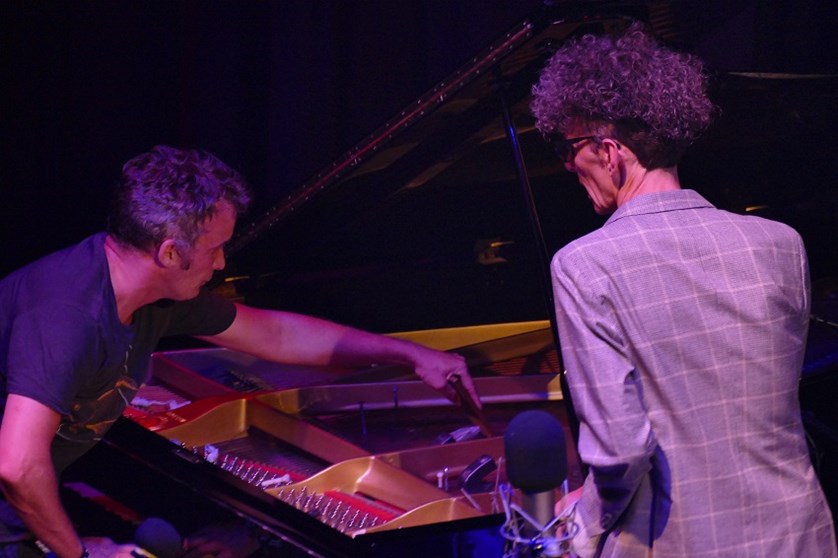
Philip Zoubek, Christina Reiner
The program spanned a wide range. It had for example some strong connections with visuals and visual arts as in the solo performance of drummer Katharina Ernst or the Rdeca Raketa (Red Rocket) unit with vocalist Maja Osjnik, modular sound maker Matija Schellander together with two video artists with their project "...and cannot reach the silence" dealt with current misunderstanding/miscommunication plagues combining spoken and sung word with sound collages and visuals. There were Christian Reiner and Christian Weber working with typographer Christian Fuchs and, there were premières too of course, the most prominent one being the piano duo of Sylvie Courvoisier and Kris Davis.
Visual Arts
At the colorful creative place of Fuchs' book bindery — a location for more festival concerts — Reiner, Weber and Fuchs worked on a long monster sentence thereby integrating reciting, bass playing and printing. The printed texts with special typography marking prosodic features of its recitation was printed by Fuchs during Reiner's and Weber's musical action. Weber revealed as an ideal partner for this kind of work. His playing remained highly original all through and his musical ideas never dried up. Afterwards you could buy the one-long- sentence text on a paper roll packed in a jam pot.
Katharina Ernst presented "le temps," her solo for drums and metal objects in five states, combining music and fine arts in performative hybrids. She re-configured the disassembled parts of a usual drum set in gradual percussive action into new dis-located constellations adding all kinds of little percussive devices and beatable objects.
Clemens Wenger’s "Physics of Beauty" is a reversion of shapes physicist A.R.P. Rau presented in his book "The Beauty of Physics" (2014). In a collaboration with visual designers Alessia Scuderi and Gianluca Monaco thirty musical atmospheres trigger visual forms and shapes within the continual flow of Wenger's music. The work had first been presented as a website-album end of 2020 and was replicated at the festival.
Microtonality
It seems there is a growing interest in microtonality among musicians from Austria. Two groups, GeoGeMa and Dsilton devoted themselves entirely to microtonality. GeoGeMa is Gerald Preinfalk (reeds), Georg Vogel (microtonal keys) and Brazilian drummer Matheus Jardim. Preinfalk, also a long-term member of Klangforum Wien, is a busy musician working in a lot of fields. Keyboardist Vogel is also member of the new group Dsilton. He played a 31-tone clavitone together with David Dornig on 31-tone guitars and drummer Valentin Duit.
Humor
There was again space for high calibre musical fun. Two performances stood out here: Austrian ensemble Vegeta, and Dutch-German group Kuhn Fu, featuring the tenors of Tobias Delius and John Dikeman. The wild bunch of Kuhn Fu and the louts of Vegeta (Martin Zrost/Helge Hinteregger/Lukas Kranzelbinder/Lukas König) celebrated their own roaratorio, put stuff upside down, shot across, were ruffling and tousling all and everything. Nothing is better than fierce power played with a salty wink, epic overdrive transmutation, spoof and burlesque. There were other configuration having elements of this too as The True Harry Nulz, Hang 'Em High, and last but not least also Ceramic Dog with its stony ruffling rock power nicely barbed, downgrading lots of shit that's spoiling our lives. With its sharply cut sloppiness it descends to the mean dusts of reality where also words count.
Words, Voices, Resistance
Ceramic Dog music is permeated by reality dust. It articulates resistance and political organization on the micro level of daily life, and also reflects on 'bigger' structural matters determining our daily life. It is connected to an old US-American tradition of social movement and political struggle associated with figures such as Woody Guthrie.
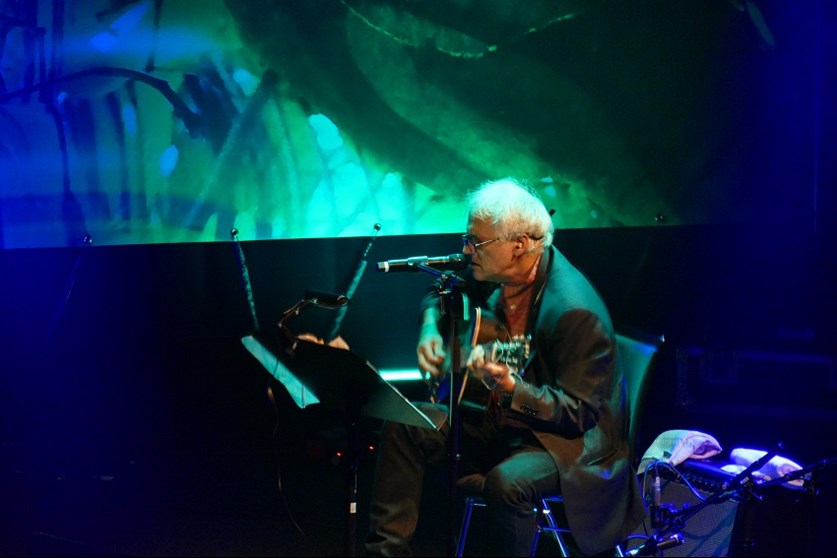
Marc Ribot
The music emerged from a longer process of participation in a wide variety of rebellious idioms and has fused these sources into its own hard alloy. Chuck Berry and Rosetta Tharpe, Tom Waits and Albert Ayler, music from New Orleans and Havana or Lima all have left traces in that idiom. It is great music in itself, not reducible to social movement, resistance and political struggle. Ribot succeeded in saving some of the former social movement spirit and creates an own voicing for its expression in present time. The music can take on different shapes and different ways of transferring, as raw blast, hammering rock or very informal as sung talk, attacking, scorching, raging. And yes, Ribot is the one who while sitting on an old chair on stage, his reading glasses at half mast, can intone a rough, furious piece/song on his electric guitar and go ahead pugnaciously. He has a tone of voice that just has this signifying value. Too beautiful singing would spoil it totally.
From Thursday onwards I hadn't seen all concerts that seemed promising, that made me curious and ready to check. Unfortunately I didn't make it to Kry, Rdeci Raketa, Liun & The Science Fiction Band (Lucia Cadotsch/Wanja Slavin/Andi Fins/Andi Haberl/Bernhard Meyer) or Lavant.
Personal Highlights
To indicate a direction in the abundance of music, I will focus on my personal highlights first, a piano duo, a large ensemble and then a quintet: Sylvie Courvoisier/Kris Davis, Kaja Draksler Octet and Fünf, a configuration initiated by Christian Reiner.
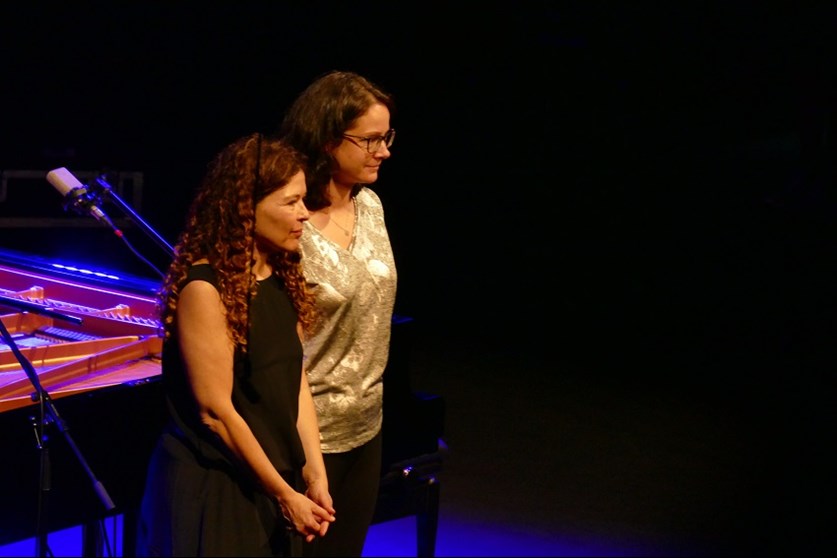
Sylvie Courvoisier/Kris Davis
Personally I have been skeptical and reluctant with respect to piano duo concerts. The grand piano is a complete and highly developed machinery. So, why double it while a lot of pianists are deconstructing and extending this machinery of euphony? The thrill might just be to see two mistresses/masters at work simultaneously and together at their instrument to see how they cope with the complexity or find undiscovered short cuts.
Here two self-conscious mistresses of the instrument and advanced ensemble leaders were at work. Kris Davis has experience with the format from her duo work with Craig Taborn. Sylvie Courvoisier recently engaged in a duo with Cory Smythe in a Stravinsky program together with flamenco matador Israel Galvan with whom she already has a long history of collaboration. Their performance was evidently very well and thoughtfully prepared and allowed them to perform on a high level. Both musicians worked their way to and from the deeper core of well-structured pieces, allowing regular pianistic fireworks as well as back and forth maneuvers marking individual characteristics of both musicians. It all felt like organic extensions of their respective signatures: alternately exposing individual characteristics, working on a common core and break through to climax and catharsis. The music (making) fascinated and caught me due to its holistic quality, its thoughtful dramaturgy, its way of going wild and its cathartic quality. I became completely reconciled with the double piano concept in this case. The concert was clearly my personal favorite.
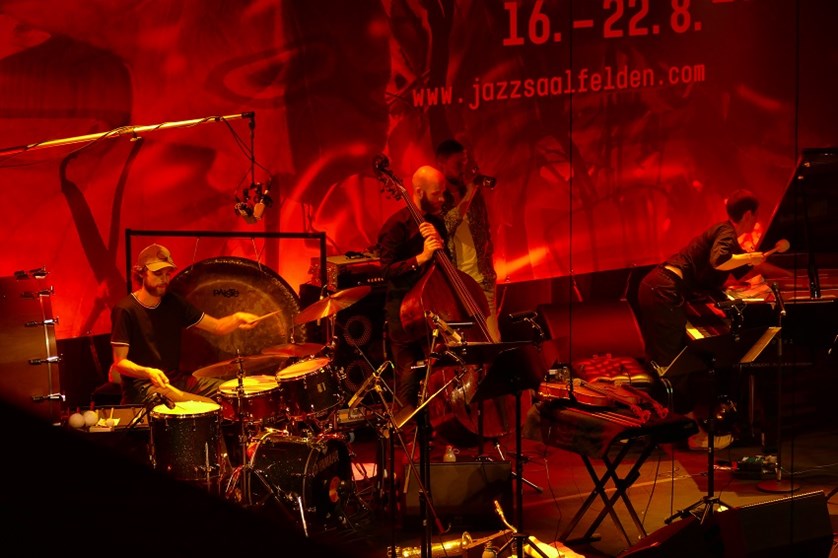
Onno Govaert, Lennart Heyndels, Kaja Draksler
Kaja Draksler
The music started a bit stiff and it took some time to become more fluid. That happened clearly after Draksler switched to a more loose and less closely controlled way of playing. In this loose part a remarkable solo from viola player George Dumitriu came to the fore and went into a beautiful variety of astonishing micro- tonalities, which he elaborated in his characteristic calm, unhurried way. It not only enriched the piece but mainly injected energies and perspectives to proceed. Draksler did the same from piano, providing a stronger carrier force to emerge in the subsequent part, sounding magically like a funeral march leading into a cathartic apotheosis greatly reinforced by the characteristic skew tonality of Ab Baars’ tenor saxophone in full blast.

George Dumitriu
Fünf
Fünf (meaning 'five') were five musicians of rich imaginational force that had joined together for this performance: Austrian spoken word master and artist in residence Christian Reiner, Swiss bassist Christian Weber, electric guitarist and electronics wizard Martin Siewert from Austria and US-American drummer Jim Black for quite a while now resident of Berlin/Luzern.
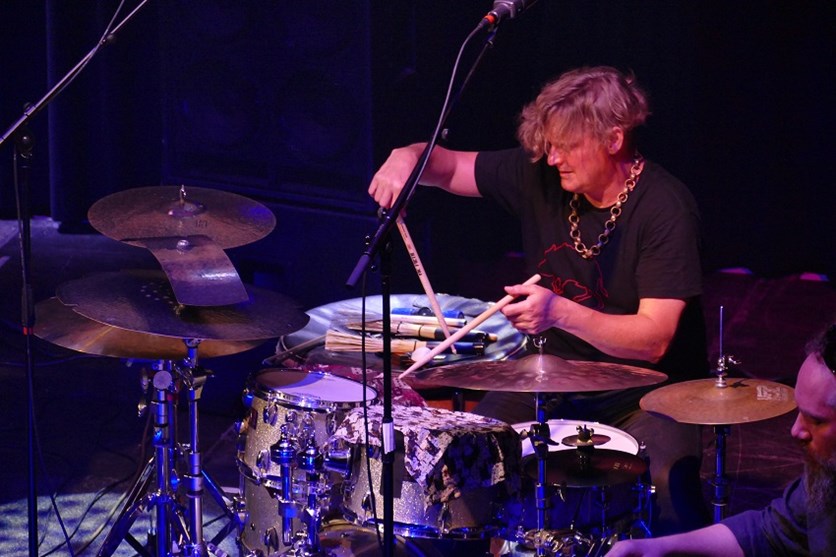
Reiner has created his very own neo-Dadaist spoken word genre. His main material are key utterances from everyday conversations and narrations. He connects those by his very own cut-up technique, thereby creating lightly bizarre cross-sectional narratives. Treating those as objects trouvées, he stages these utterances as a poetical 'metalanguage dansant.' Calibre and concatenation of these utterance-objects is determined by an underlying rhythmic base generating a strong cadence. The resulting speech flow offers rich possibilities for the other four musicians to create intensely interlocking tapestries.
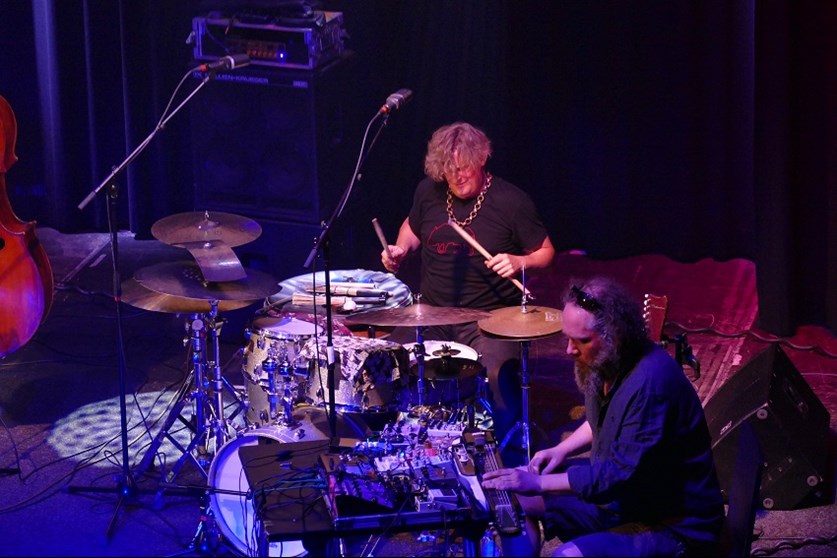
Jim Black passionately dove into the speech flow and intensified it by his subtle and forceful drum-work. His drumming incited his fellow musicians to take their part in shaping the whole into a surprising gestalt. Certainly the ultimate fun for the audience is to sense the creation of the tapestry together with the meaning and the pragmatics of the 'mixed' utterances. However, for listeners with low comprehension skills of German, enough was left to enjoy from the suggestive force of the intense and playful interaction of the four musicians. It was the more astonishing that the twists Jim Black - as nonnative speaker go German - gave time after time, strongly fitted the dramatics of the speech flow and its meaning. Music and speech clearly and strongly reinforced each other. It is not only a question of a certain mood but also a question of the distinctive quality of the turns and twists and its dynamics.
Reiner has a solid background in lending his voice for advertising where you need a significant appealing voice character with a strong suggestible force. Reiner's art can be considered as a new branch of a long Austrian art tradition that was for example represented by poet Ernst Jandl (1925- 2000) who had a firm connection to perform in jazz contexts. Other examples are Friederike Mayröcker, Ernst Rühm and H.C. Artmann. The line can be retraced to cabaret artists such as Helmut Qualtinger and language critics and philosophers as Karl Kraus and Ludwig Wittgenstein.
Together with bass clarinetist Susanna Gartmayer and drummer Katharina Ernst he consequently also dove into the 'hard' stuff of Christine Lavant (1915-1973), another extraordinary and legendary Austrian writer. Reiner rendered her poetry as shouting and screaming in the woods (Kollingwald) giving Lavant's words a far sylvan echo.
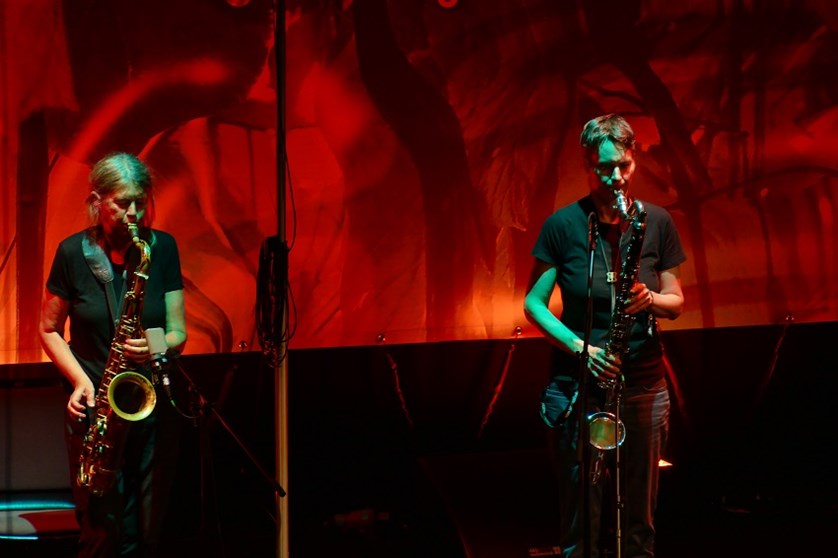
Lotte Anker, Susanna Gartmayer (Luft)
Luft could have been a counterpart to the music the Fünf configuration created. The exquisite line-up of five wind instruments with Susanne Gartmayer (b-cl), Richard Koch (tr), Mona Matbou Riahi (cl), Matthias Muche (trb), Lotte Anker (sax) was an expansion of his duo with trumpeter Richard Koch. 'Luft' stands for the central airy aspects of this configuration feeding music with spoken word vice versa. What looked quite promising did not really create a new airy quality of Reiner's art -a pity given the availability of such excellent musicians. It didn't work out on an adequate level, es fügte sich nicht -maybe also due to lack of available rehearsal time.
It is interesting to look at the Austrian varieties in comparison to the US-American ones, especially compared to Moor Mother's edgy cuts and urgent conjuring. Here the voice is clearly differently anchored in and emerging from the music. It is surely rougher in a special combination of proudness and belligerence and hard to grasp turnings inside to outside, and vice versa. There is nothing in there that can be smoothed out or in passing be absorbed. It nails, pegging!
Choices Or 'Qual Der Wahl'
In spite of all Covid complications the concert supply was abundant and varied. It was a continual challenge to find a balance of meeting people and exchange after the long forced covid break, and feeding ears and spirit with attracting freshly brewed music - an old problem slightly sharpened. It is a pity that it didn't work out to see and experience Kry (Mona Matbou Riahi (cl), Philipp Kienberger (b), Alexander Yannilos (dr)), Rdeci Raketa, Liun & The Science Fiction Band, as well as Lavant.
The new duo of saxophonist Angelika Niescier from Germany and pianist Alexander Hawkins from UK is an ideal match on the zenith, it's diamond cut diamond. Complementing each other in temperament, they activate the best in each of them. It's surprising it didn't happen earlier. It was an unadulterated pleasure with exciting interplay, great lines, superb runs and masterly turns, just 100% all. They can both draw from a rich fund and still have a lot up their sleeves.
It was great luck Saalfelden managed to have exceptional pianist Craig Taborn from the US around for three days, appearing in a series of concerts: a concert with his new trio of cellist Tomeka Reid and drummer Ches Smith, solo (in the woods) and a peculiar combination with Austrian pianist Elias Stemeseder and German drummer Christian Lillinger.
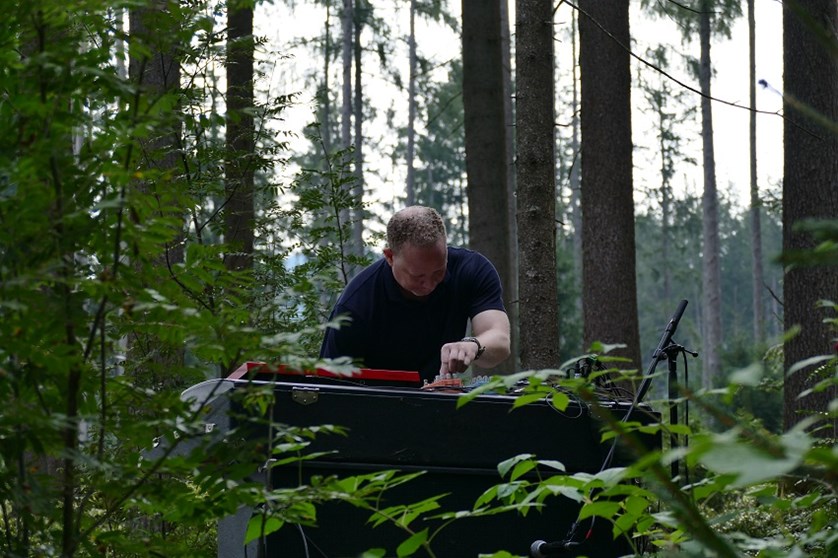
Taborn is a musician with wide range capabilities of quite deep reach and open-ended perspective. There are few things he has not dived into, driven by his strong innate curiosity. He had and has a high grade of momentum in his musical action -a non- reproductive musician par excellence! He has become even more consistent and persistent in these characteristics. It manifested most intensely in his solo appearance in the forest. He made plants and trees not only witnesses of his music making: through his wandering sounds he fathomed moods such that sounds and moods became entangled with leaves, wooden branches, stems, moss, fungi and mycelia, rocks and the human figures that hung around the trees.
His new trio played for a greater part on 'hard surface.' The music had not yet descended to greater depth, had not fibered through its body at a higher extent, which undoubtedly will happen further along its path.
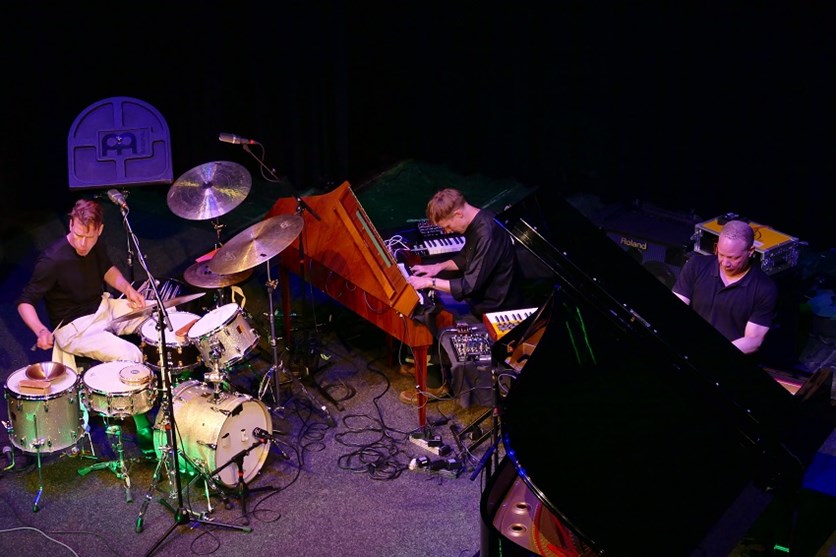
Lillinger Stemeseder Taborn
The ad-hoc meeting with Lillinger and Stemeseder was an initiative of Lillinger. It developed into a dense, obsessive and overloaded encounter, lacking contact points and openings for most listeners. It became quite quickly too competitive leading into dogged stretching. All three worked hard, Stemeseder partly on a spinet, to get something out of it and just that impeded it massively. In-dwelling forces didn't really ignite in the end. No sadness however. Lillinger could be seen in full range of three other formations, namely Dell/Lillinger/Westergaard, Punkt.Vrt.Plastik and KUU. While the two trios are permanently and passionately pushing the envelop to develop and overwrite and rewrite complex new forms, KUU, this Finno-Serbian-German unit, restlessly combs through colliding, darkening, distorted and warped layers of reality experiences under the lead of the flashing, firing, zigzagging voice of Jelena Kuljic. She and guitarist Kalle Kalima are the rotation poles, conjuring up grotesque galaxies and swooned moonshine for artificial sheep. Guitarist Frank Möbus and drummer Lillinger weave their threads into it, pushing and pulling the sky chariot.
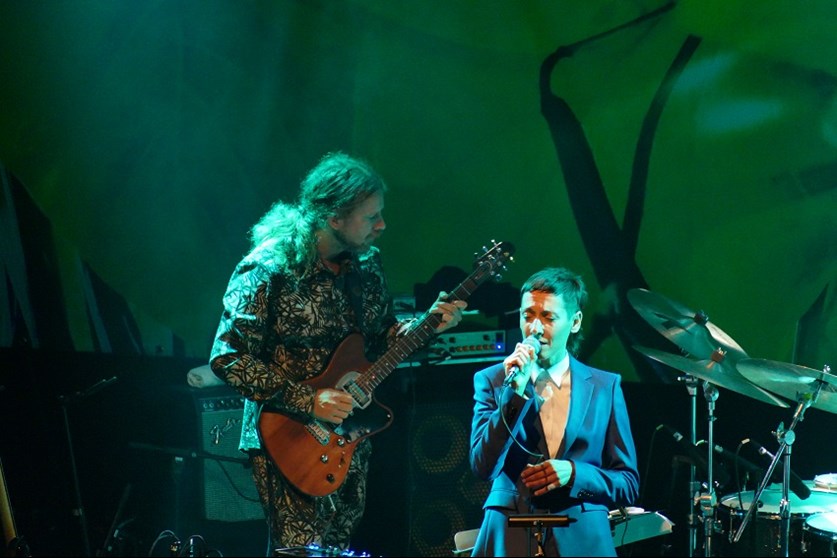
Kalle Kalima, Jelena Kuljic (KUU)
Thus Saalfelden casually presented a broader portrait of Lillinger, which was designed prior to Lillinger being awarded two of the highest German Jazz Awards, one as Artist of the Year and one as Drummer of the Year. Lillinger reached a peak of attention and exposure this year at a multitude of festivals and venues. Saalfelden anticipated this and presented Lillinger in all his variety, his uncompromising agility and obsessiveness. Maybe on this zenith of his work, it is the time to think of recording a ballad album.
Obsessive in a different sense was the full-pressure appearance of the Portuguese trio of bassist João Madeira, trumpeter Luis Vicente and drummer Mario Rua. They followed the footsteps of the now defunct power trio The Thing. The trio raucously stormed forward, thereby piling up a wildly flashing and thundering wall of sound. They persisted and reached a frenzied standstill without really unlocking the centrifugal forces. Hopefully this was an upbeat to presenting more groups of the vibrant and wild Portuguese scene or even instigate collaborations/exchange in the near future. [LINK-Bremen Artikel]
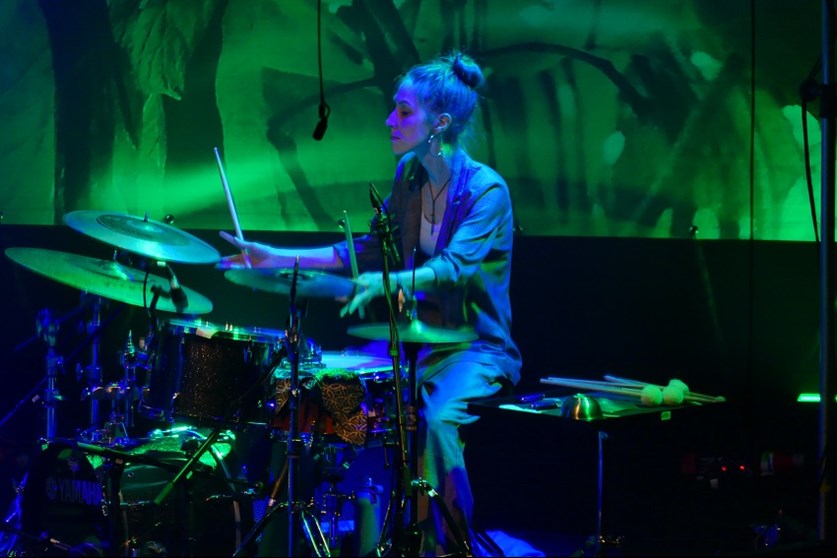
Judith Schwarz (Chuffdrone)
Chuffdrone is a successful younger band comprising saxophonist/bass clarinetist Lisa Hofmaninger, saxophonist/clarinetist Robert Schröck, pianist Jul Diller, bassist Judith Ferstl and drummer Judith Schwarz. Chuffdrone’s music was as compact as dazzling with surprising turns in free spirit.
Søch, the duo of pianist Anna Sophia Defant (born in Saalfelden) and electric guitarist Bernhard Hadriga came up with contemplative improvisations that dug deeper keeping a fine sustained radiance. It formed a striking counterbalance to the hectic areas of the program without losing good mobility.
Conclusion
Saalfelden succeeded in bringing some musicians and bands from the other side of the Atlantic Ocean into the festival as Sylvie Courvoisier, Kris Davis and Craig Taborn. It was a good move then to have a final concert with a just not over-known musicians from Brooklyn, saxophonist Avram Fever with his fellow musicians Marc Ribot (g), Chad Taylor (dr) and Nick Dunston (b) subbing for Eric Revis. Marc Ribot himself came traveling from the Adriatic Sea. Nick Dunston moved to Berlin recently, which increases his flexibility to work in Europe and with musicians from Europe. Fever's troupe brought energetic, compact sounds and sparked a blazing fire that felt like a good summary of the festival days and its music -a rare beautiful thing.
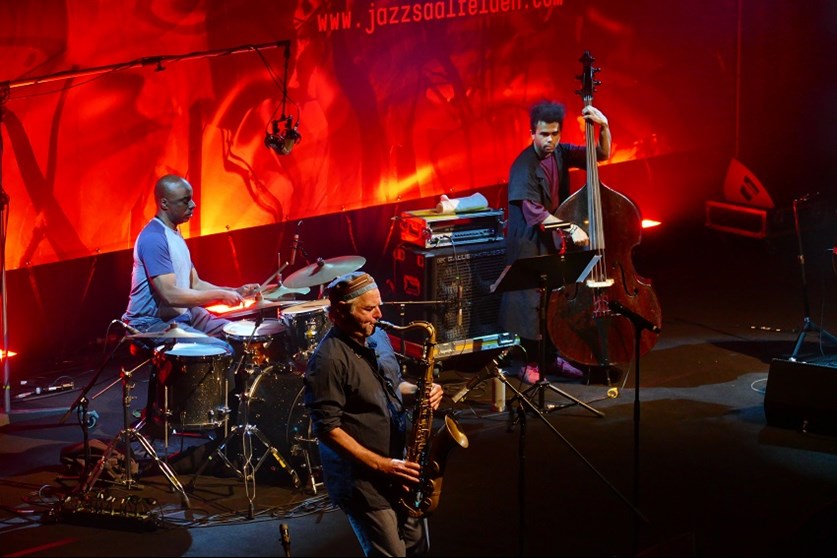
Chad Taylor, Avram Fever, Nick Dunston
What made Saalfelden so special: it is not only down to a unique atmosphere, or to the broad range of the program. Above all, it is the composition of its parts and its composition, as well as arrangement at various sites and locations. The festival thereby unites a variety of characteristics that other festivals often only have as a singularity.
In addition to the deserved praise there are still a few critical notes: concerning the catchment area, the sound, and the way of presenting Melting Pot. Although Saalfelden set a first step into the jazz realms of South Europe by presenting a rugged trio from Portugal. However more from the Mediterranean would be desirable, not only as sheer desideratum but just to let cultural coloring shine, the indigenous and that of 'the other.' This refers primarily to specific approaches to improvised music and instant composing.
Melting Pot is a festival element that emerged from the collaboration of a number of festivals/venues bringing young musicians from various countries together and let them develop music during a short residency. I have seen inspiring, lively, delightful and insightful versions of Melting Pot presentations, especially in Wroclaw, but also searching and getting lost versions. It is a necessary challenge for the participants of Melting Pot to find a suiting and effective means of presentation as an integral part of their residency, and is a task for festivals to facilitate attractive ways of presentation. Some work has still to be done in that respect.
The livelihood of Saalfelden 2021 was no fiction nor virtual reality. It was tangible with now and then a puzzled look-up. We have lost a natural, deeply rooted carelessness. The question is if it will wear out in the long run and/or what we will yield as 'new' achievements in and through music.
Review/photos © Henning Bolte
Other
In case you LIKE us, please click here:
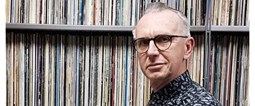
Foto © Leentje Arnouts
"WAGON JAZZ"
cycle d’interviews réalisées
par Georges Tonla Briquet

our partners:
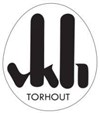


Hotel-Brasserie
Markt 2 - 8820 TORHOUT
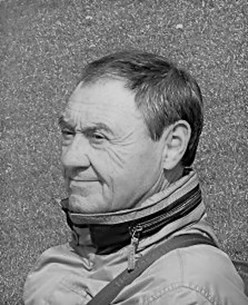
Silvère Mansis
(10.9.1944 - 22.4.2018)
foto © Dirck Brysse
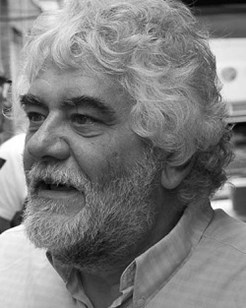
Rik Bevernage
(19.4.1954 - 6.3.2018)
foto © Stefe Jiroflée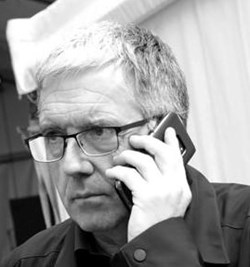
Philippe Schoonbrood
(24.5.1957-30.5.2020)
foto © Dominique Houcmant
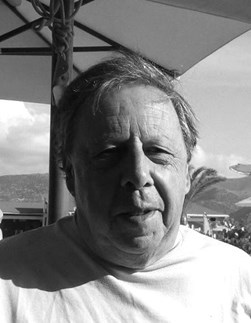
Claude Loxhay
(18/02/1947 – 02/11/2023)
foto © Marie Gilon
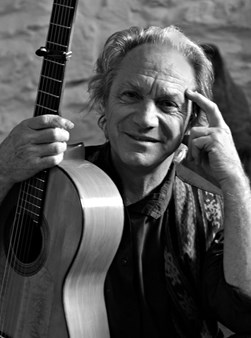
Pedro Soler
(08/06/1938 – 03/08/2024)
foto © Jacky Lepage
Special thanks to our photographers:
Petra Beckers
Ron Beenen
Annie Boedt
Klaas Boelen
Henning Bolte
Serge Braem
Cedric Craps
Luca A. d'Agostino
Christian Deblanc
Philippe De Cleen
Paul De Cloedt
Cindy De Kuyper
Koen Deleu
Ferdinand Dupuis-Panther
Anne Fishburn
Federico Garcia
Jeroen Goddemaer
Robert Hansenne
Serge Heimlich
Dominique Houcmant
Stefe Jiroflée
Herman Klaassen
Philippe Klein
Jos L. Knaepen
Tom Leentjes
Hugo Lefèvre
Jacky Lepage
Olivier Lestoquoit
Eric Malfait
Simas Martinonis
Nina Contini Melis
Anne Panther
France Paquay
Francesca Patella
Quentin Perot
Jean-Jacques Pussiau
Arnold Reyngoudt
Jean Schoubs
Willy Schuyten
Frank Tafuri
Jean-Pierre Tillaert
Tom Vanbesien
Jef Vandebroek
Geert Vandepoele
Guy Van de Poel
Cees van de Ven
Donata van de Ven
Harry van Kesteren
Geert Vanoverschelde
Roger Vantilt
Patrick Van Vlerken
Marie-Anne Ver Eecke
Karine Vergauwen
Frank Verlinden
Jan Vernieuwe
Anders Vranken
Didier Wagner
and to our writers:
Mischa Andriessen
Robin Arends
Marleen Arnouts
Werner Barth
José Bedeur
Henning Bolte
Erik Carrette
Danny De Bock
Denis Desassis
Pierre Dulieu
Ferdinand Dupuis-Panther
Federico Garcia
Paul Godderis
Stephen Godsall
Jean-Pierre Goffin
Claudy Jalet
Chris Joris
Bernard Lefèvre
Mathilde Löffler
Claude Loxhay
Ieva Pakalniškytė
Anne Panther
Etienne Payen
Quentin Perot
Jacques Prouvost
Renato Sclaunich
Yves « JB » Tassin
Herman te Loo
Eric Therer
Georges Tonla Briquet
Henri Vandenberghe
Peter Van De Vijvere
Iwein Van Malderen
Jan Van Stichel
Olivier Verhelst



